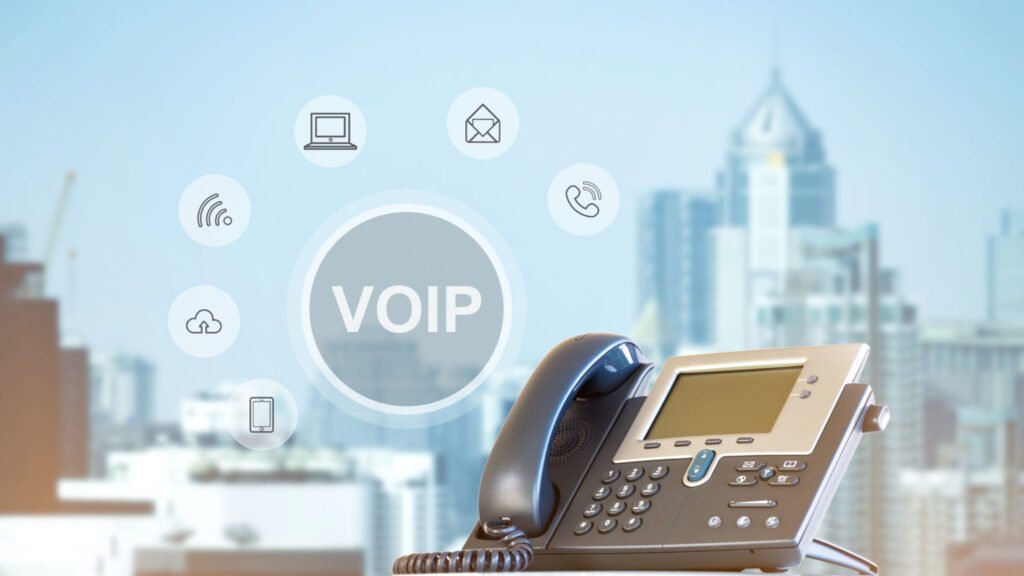One of the most common equipment an IP communications network needs is IP phones. They are devices capable of handling internet protocols (the “packages” containing your voice data). All of the features included in VoIP phones are outlined below, but a hard IP phone doesn’t differ much in looks and hardware from a traditional telephone.
Voice over Internet Protocol technology is widely available in the form of mobile apps such as WeChat or Messenger. However, as a business, you will need to use a unified communications platform to keep all of your company’s devices connected, even those used by your remote employees outside of the office.
Yeastar’s cloud-based PBX system is one example of such a platform. It’ll keep all of your firm’s phones’ VoIP data passing through one server, synchronized and out of the sight of third parties.
VoIP Phone Features
A standard, hard VoIP phone has all of the features that a standard telephone would have. That includes a headset, dial pad, and line keys. Familiar options, such as hold, call transfers, and quick dial assignments, are all available in your standard IP phone, as well. The most unique aspect of these devices is that they can connect to the internet, either via WiFi, Ethernet, or both. Some hard VoIP phones also come with Bluetooth.
When it comes to softphones, the software they operate on is nearly indistinguishable from your standard messaging app. They’re also equipped with standard telephone options, as well as the added convenience of deciding which device the calls get directed to first.
Another great feature of “VoIPs” is the fact that you can carry your phone number over to a VoIP service seamlessly. Voice over Internet Protocol doesn’t require any special sort of a number, so the whole operation is as easy as transferring your phone number from one provider to another. On top of all that, the calls are completely free of charge, as opposed to landline communications, where there is a certain service provider fee you need to pay in order to make a phone call.
Choosing the Right VoIP Phone for You
Yeastar’s PBX solutions support most of the IP phones that are currently on the market. This means that if you already own an IP phone, you most likely don’t need to spend more money on a different model if you’re thinking of switching to this service.
Hard phones are most useful in day-to-day office situations, such as direct calls between co-workers or large-scale conference calls. Contrary to traditional landline devices, a hard telephone can be connected to a hands-free appliance, such as Bluetooth headsets or speakers.
Softphones are great alternatives to IP phones, especially when your business operates in various geographical locations at once, and not all of your employees are under constant access to the IP network with a telephone capable of making a VoIP call.
Determining Your Business Needs
To determine how to transfer your business communication network over to VoIP phones, you will need to focus on the scale of your enterprise, how many phones your office requires, as well as the number of remote workers you’re currently employing. All of this is necessary to estimate how many devices you’ll need and the burden all of the VoIP phones will place on your internet connection.
The cloud-based PBX platform Yeastar operates on is compatible with auto-provisioning, which means that the process of configuring all of your connected devices is mostly automatized, leaving you with the task of manual configuration of a single VoIP phone. The rest of the process is simple plug-and-play!
Conclusion
VoIP technology has come to revolutionize business communications in many ways. It allows companies to drastically cut unnecessary costs related to basic operations, thanks to free phone calls via the World Wide Web. Additionally, it has brought UC platforms to all of those who work from home, streamlining business operations even further.
If you’re tired of poor audio quality and clunky phones interrupting conference calls, switching over to a VoIP service may just be the fix your business needed to get back on track, both in terms of saving resources and conveying information in a much easier manner.
